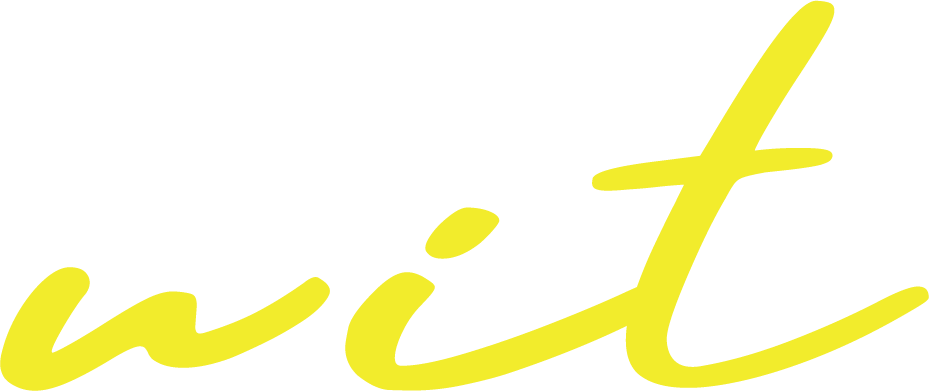“Why do I have back pain when I can do so many sit-ups?” – A question that comes back regularly, so worth a little dive into the core mechanics.
As we know now, back pain (especially lower back pain) commonly derives from weak abdominal muscles. So, working out the opposite muscles to your back sounds like the right answer to your problem. But is it really? Well, the fact is that the more sit-ups you do, the more you will harm your back. How can that happen?
Where does back pain come from?
Back pain happens when the main posture overuses the back muscles to hold the body together to maintain the frame while sitting or moving. The more those back muscles are stimulated, the more they are going to be used. Basically, the back muscles take over all the work the posture requires from the body, leaving the core muscles undeveloped.
If the resulting back pain becomes more serious or even chronic, you would go and see the doctor, who would likely suggest physiotherapy to work out your abdominal muscles to distribute the postural work more evenly between your muscles. Although this is not wrong, it is certainly incomplete.
Why doesn’t the traditional abs workout work?
In fitness or any physical conditioning, when it’s about working out the core muscles, you’re advised to do a certain number of repetitions of the following common exercises:
- Plank (example: plank exercise)
- Crunches straight or obliques (example: crunch exercise)
- Curl up to sit-ups (example: sit-up explained)
- Russian twist (example: simple russian twist)
Traditionally, you would increase the repetitions until you can’t do it anymore. As Muhammad Ali said: “I only start to count {the sit-ups} when it starts to burn. However, all these exercises mainly focus on using the recti muscle (also known as the six-pack) and the obliques muscles, not the deepest one, the transverse muscles.
So even though the expectation from doing sit-ups is to counterbalance the strength from the back muscles by pulling your body forwards, you’re flexing both your back and core muscles, putting pressure on the spine; like two teams pulling the same rope at the same time, and the result is that one side falls flat, or the rope (your spine) gets torn.
By doing this kind of training myself and consequently struggling with serious back problems, I learnt to identify numerous problems with the above exercises:
- The main movement is the flexion of your spine forwards or sideways, which forces the back muscles to resist the extension.
- The exercises are taught as doing the flexion by pushing the belly out. However, when doing so, you push the organs out and downwards. This creates more pressure on the connective tissues that hold the muscles together, increasing the chance of developing hernias, constipation, and prolapse.
- Doing sit-ups, in particular, is a widely misunderstood abdominal exercise. It might engage the top part of the recti but not the bottom part as much, instead using the hip flexors. If you already are sitting long hours at work, doing sit-ups will put additional pressure on your hips, causing harm.
- The correct way of doing the plank can be efficient, which would imply not feeling the pressure on your shoulders, and not engaging your glutes or back muscles, which tend to take on all the work. Also, you would be able to breathe. In this setup, the core indeed works. Otherwise, it also just adds more tension on the back.
As you can see, the traditional core exercises, even when done right, put a lot of body parts that were not targeted with the exercise under intense pressure while only fractionally improving the targeted muscles. When done incorrectly, they don’t just deliver a poor result. They can also cause serious health problems in the long run.
How to optimise your core training
To get rid of any back pain and strengthen your core the main core muscle to work out is the deepest one: the transverse muscle.
The transverse muscle is the only muscle wrapping around your body. It looks like a corset, originating from the six lumbar vertebrae (each side) and closing at the top behind the recti (attached to it) and at the bottom over the recti, maintaining a close relationship with the recti.
On the below illustration you can see the position of the transverse muscle below the recti, as well as its contraction capabilities schematised as six floors. These floors will be actively practiced during the following core exercises.

The difficulty is that you can’t stimulate or contract the transverse muscle when it’s in flexion or extension. You need to be in a neutral alignment to work with it which is the base of the following core exercises.
#1. Set up neutral alignment
The neutral alignment requires some focused energy put into your frame. Practising these different positions will help you get into it naturally and develop more awareness of what is happening with your body during and beyond your training. The principles of neutral alignments and their role in a strong posture are discussed in The principles of body mechanics.
1.1. Neutral alignment for sitting position
- Place your pelvis on the sit bones
- Place your feet flat on the floor
- Lengthen your spine up to create space between your hips and your ribs
- Bring your stomach in (suck the belly in)
- Relax your shoulders down (not forward) by moving the shoulder blades towards each other
- Keep your head straight, looking forwards to avoid rolling your spine
- Place a large pillow behind your back to feel the alignment (don’t lean on it)
The placement of your knees is also really important to keep the pelvis neutral:
- Case 1: If the knees are higher than the hips, that would roll your pelvis back and flex your spine. Solution: add a pillow (or several) under your bum
- Case 2: If the knees are lower than the hips, that would roll your pelvis forwards and extend your spine. Solution: add a book (or several ) under your feet.

1.2. Neutral alignment for standing position
- Ground your feet on the floor about your hips width apart
- Soften your knees
- Tuck your tailbone slightly in
- Lengthen your spine upwards
- Bring your stomach in
- Relax your shoulder down
- Look forward to keep your head and spine straight

1.3. Neutral alignment for laying position
- Bend your knees and keep your feet flat on the floor
- Place your sacrum on the floor (flatter bone at the end of the spine, before the tailbone)
- Flatten your back on the floor, creating a small space between the lower back and the floor that is the thickness of your hand
- Relax your shoulders down
- Look slightly forward at the ceiling to make your neck comfortable

Note: To ensure you are in a neutral alignment in all three positions, and to be able to hold them during exercise, place one hand on your stomach and one on your lower abdomen. This is important because the transverse muscle has two separate attachments to the recti: one is behind the recti at the top, and the other is all over it at the bottom. If your ribs come out, it means you are in extension, while if your lower abdomen comes out, it means the hips are under pressure. Both we want to avoid during exercise.
#2. Warm-up – The belly breath
This exercise brings awareness to the transverse muscle and prepares you for the core exercise. You are already using your transverse muscle with every breath you make and everything you do. These just don’t make it stronger, that is why targeted exercise is needed. The belly breath exercise is a great warm-up that is done in a neutral alignment:
- Breathe in through your nose while gently expanding your belly forwards
- Breathe out through the mouth and bring the tummy button (focal point) towards the spine, into the fifth floor
- Repeat 8-10 times
- Leave one hand on your stomach and one hand on your lower abdomen to keep your neutral alignment checked
#3. Light exercise – The transverse hold
This exercise is to really feel where the transverse muscle is and its impact on your core. I’m going to describe the following protocol in a sitting position. However, I recommend that you practise in every position listed above.
- Breathe in through the nose while gently expanding your belly forwards
- Breathe out through the mouth and bring the tummy button (focal point) towards the spine, into the fifth floor
- Hold it there for 30 counts – count out loud
- Add three sets of three repetitions of the above spread throughout the day
- Leave one hand on your stomach and one hand on your lower abdomen to keep your neutral alignment checked
Note: Counting out loud is vital because that is how chest breathing is kept going without getting confused with the transverse work.
The focus is on holding the flexion and counting out loud without getting out of breath. You will feel a warm sensation coming from the transverse muscle as a result of the workout.
#4. PROGRESSIVE exercise – The Hug
This exercise will really make your transverse muscle stronger. You might have heard about this one but called the “Contracting exercise”. However, I don’t think it does it justice, although it is about contracting the muscle. For me, contracting this muscle feels like a hug around the body’s centre.
During the warmup, you bought your belly into the fifth floor and you could feel the capacity of your muscle while expanding and contracting. To strengthen the core with the Hug exercise, we use this capacity on all the six different levels of the transverse muscle.
The exercise for the first two weeks:
- Breathe in through the nose while expanding your tummy forwards
- Breathe out through the mouth and bring your tummy button to the third floor. Hold it there as a baseline for the rest of the exercise
- From the third floor, squeeze it to the fifth, count one out loud and release it back to the third floor
- Repeat 100x (takes two and a half minutes)
- Take a belly breath when finished to relax
You might feel your back muscle is sore or even reacting after that. It’s normal because you are working on a muscle that has been ignored and/or undeveloped. You are also challenging how you have been holding your posture for months, years, or forever.
From the third week, you’re going to do the exercise from the fourth floor to the fifth floor, and then go from the fifth floor to the sixth floor.
The progressive protocol for the full four weeks:
| Transverse Hold | Hug | |
| Week1 | 3 sets of 3 reps spread throughout the day, daily | From 3rd to 5th: 5 sets of 100 reps spread throughout the day, daily |
| Week2 | Same | From 3rd to 5th: 5 sets of 100 reps spread throughout the day, daily |
| Week3 | 1 set a day, daily | From 4th to 5th: 7 sets of 100 reps spread throughout the day, daily |
| Week4 | None | From 5th to 6th: 10 sets of 100 reps spread throughout the day, daily |
It is really important to focus on quality over quantity. The table above is a recommendation, but you can adapt it to whatever you feel comfortable with. If you force the contraction through the tummy button without feeling the length in your spine, you will flex it and not contract the right muscle. So do as many as still works the right muscles, and the results will be faster and long-lasting.



